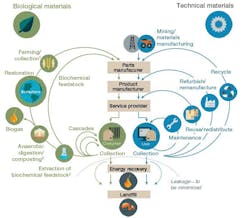With the Paris Climate Change Conference (COP21) taking place this week, I couldn’t help but release a bit of a preview to Automation World’s upcoming article on the state of sustainability in the manufacturing industries. This article (scheduled for the March 2016 issue) will be based largely on the results of a reader survey we just conducted to determine if sustainability efforts are now largely baked-in to industrial operations or if the concept has fallen by the wayside since it first emerged in a big way on the industrial scene about a decade ago.
The results we received from more than 300 readers indicate a large degree of coherence on sustainability across industry. However, the survey also shows some significant gaps in the application of automation technology to sustainability efforts. The most glaring example of this can be found in the use of software to monitor and manage plant energy use.
According to respondents, 82 percent do not use any kind of software tool focused on energy management. This finding is somewhat jarring in light of the fact that 60 percent of respondents indicate that they have specific sustainability programs in effect.
Most surprising to me is that energy monitoring software applications seem to be one of the low-hanging fruits for manufacturers in terms of ease of implementation, have low-to-no impact on operations, and offer a huge return on investment potential. Beyond energy savings through usage insights, this kind of software also opens the door to revenue generation for manufacturers by helping create the ability to sell energy back to the grid in areas where this is supported.
I’ll restrain myself in this column from digging deeper into the results of our survey, leaving that for our March feature article. But I will make note of Schneider Electric’s announcement of 10 sustainability-related commitments tied to the company’s Planet & Society Barometer, which has served as the company’s sustainability scorecard since 2005. Schneider Electric has been one of the more visible companies in the industrial sustainability movement and is well known for its energy management software products. Judging from the results of our survey, this segment of the market is still ripe for growth since so few companies have implemented software to address energy use.
Schneider Electric’s 10 sustainability commitments, announced during the COP21 event, address the company’s products, R&D, and supply chain. Those commitments are:
- Ensure CO2 impact quantification for all new large customer projects;
- Design all new offers with Schneider Electric's ecoDesign Way and realize 75 percent of product revenue with the Green Premium eco-label;
- Avoid 120,000 tons of CO2 through Circular Economy end-of-life services;
- Facilitate access to lighting and communication with low carbon solutions for 50 million inhabitants at the Base of the Pyramid in 10 years;
- Implement storage initiatives to develop renewable energy and mini grid;
- Solve SF6 issues with new alternatives in 5 years and eliminate SF6 from Schneider Electric products in 10 years;
- Reduce Schneider Electric energy intensity by 3.5 percent per annum;
- Reduce Schneider Electric transportation CO2 emissions by 3.5 percent per annum;
- Invest EUR 10 billion in R&D innovation on sustainability in the next 10 years;
- Issue a climate bond to finance low CO2 R&D across Schneider Electric businesses.
Jean-Pascal Tricoire, chairman and CEO at Schneider Electric, said: “At Schneider Electric, we are convinced that better climate means better economy. We believe we are living in a very exciting time where new technologies enable us to completely rethink the way we deal with energy in a far more sustainable and efficient manner.”
About the Author
David Greenfield, editor in chief
Editor in Chief

Leaders relevant to this article:
